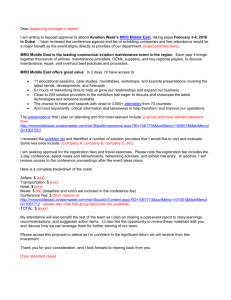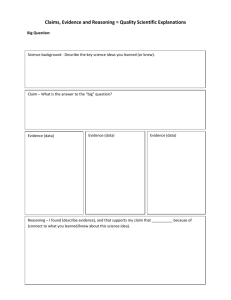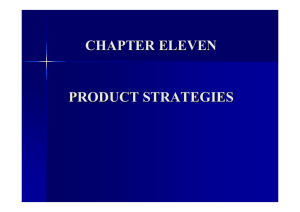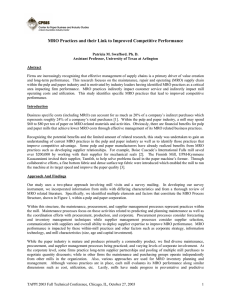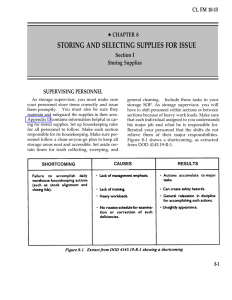Workforce Solutions: Career Information System
advertisement
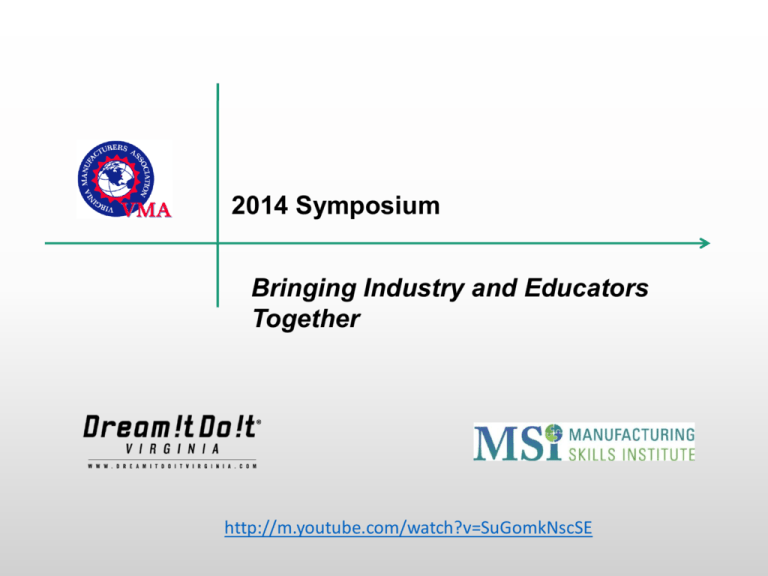
2014 Symposium Bringing Industry and Educators Together http://m.youtube.com/watch?v=SuGomkNscSE DIDIVA Workforce Solutions: So What Do You Do? © 2012 VMA National Award-Winning Program: 2014 Manufacturing Leadership Award 2012 Hermes Gold Award 2010 MarCom Gold Award DIDIVA Workforce Solutions: So What Do You Do? © 2012 VMA http://www.youtube.com/watch?v=0dgrMO7ORF4 We have a new look! Workforce Solutions: Career Information DIDIVA System © 2012 VMA Advanced Technology Jobs MSI Manufacturing Skills Institute © 2012 VMA MT1 MSI Learning Network © 2012 VMA MT1 MT1 Critical Skills Areas © 2012 VMA The MT1 documents core industry-wide skills standards required for all production occupations in all sectors of manufacturing: Math and Measurement: Spatial Reasoning and Manufacturing Technology: Quality and Business Acumen: • Algebra •Spatial Reasoning • Quality and Lean Manufacturing Concepts • Measurement • Math for Quality •Mechanics •Fluid Power and Thermodynamics •Electricity •Chemistry •Manufacturing Processes • Statistical Process Control (SPC) Basic Concepts • Financial Literacy and Business Acumen & Controls Manufacturing Specialist Certification = Pass rate of 75% on (1) Math and Measurement and (2) Spatial Reasoning and Manufacturing Technology Manufacturing Technician Level 1 Certification = Pass rate of 75% on all three: (1) Math and Measurement, (2) Spatial Reasoning and Manufacturing Technology, (3) Quality and Business Acumen. Manufacturing Technician - Twelve Critical Technical Skills Standards Measurement Demonstrate 1.Using a Decimal Inch Machinist’s Rule to Measure a Length 2.Using a U.S. Ruler and Tape Measure to Measure a Length 3.Using a metric ruler 4.Measuring liquids/weights in Metric and U.S. Customary Units 5.Converting Between Common Fraction Inches and Decimal Inches. 6.Convert Between U.S. Customary Units and SI Metric Units. Algebra for Manufacturing 1.Perform correct order of operation to simplify mathematical expressions. 2.Generate linear equations with one unknown for situations described in text. 3.Solve simple linear equations with one unknown. mechanical force and systems involving pulleys, levers, and gears. 2.Determine mechanical advantage of different systems of pulleys 3.Determine effects of different lever configurations on the force required to lift an object 4.Generate different configurations of gears and axels to increase power or speed. 2.Chemical Reactions: Explain chemical bonding and structural changes that take place in common chemical reactions and interpret chemical formulas and equations. 3.Polymers: Generate explanations of molecular structural difference and physical characteristics between common types of polymers such as slime, flexi- putty, rubber and plastic bags. Fluid Power and Thermodynamics 1.Generates the Sequence of Operation and a Flow Diagram for production tasks and processes. 2.Generate explanations of how electricalmechanical controls and sensors operate in simple systems and devices. 3.Create flow charts for models (mock-up) of simple computer controlled systems such as a traffic light or washing machine. 1.Generate causal explanations of behavior of (a) simple systems involving changes in pressure, temperature and volume, (b) simple hydraulic/pneumatic devices and (c) principles of heat transfer. 2.Predict the effects of changes in pressure on volume and temperature 3.Predict the effects of changes in temperature on volume and pressure 4.Predict the mechanical advantage of simple hydraulic and pneumatic systems. Manufacturing Processes & Control Quality and Lean Manufacturing Concepts 1.Identify descriptions of manufacturing quality and lean production initiatives as examples of 1.Read and interpret histograms, bar charts, line Electricity value stream mapping, waste elimination, 5S, graphs, and scatter plots. 1.Generate causal explanations of the DMAIC, and Total Productive Maintenance (TPM) 2.Interpret descriptive statistics: Mean median, relationship between electrical and magnetic 2.Create a process map and value stream map to mode, and range. forces and explanations of how electric motors, improve a process or reduce waste 3.Demonstrate qualitative reasoning for generators, solenoids, and relay switches behave. 3.Demonstrate using a industry standard problem situations involving statistical data and 2.Generate causal explanations and predictions solving method such as DMAIC for improving probabilities. of electric circuit behavior involving simple series production processes. Currently using DMAIC. and parallel circuits containing relays, capacitors, Spatial Reasoning resistors and simple devices such as light bulbs SPC Basic concepts 1. Visually translate from 2D drawings to 3D and pumps. 1.Determine plausible causes in fluctuations in images and back processes based on statistical information (mean, 2.Identifying different views for given isometric Chemistry range, & variation patterns) drawing of an object. 1.Core Concepts: Classify substances as a 3.Identifying the different elements of an object molecule, element, mixture, or compound; Business Acumen in various views classify changes in substances as chemical 1.Predict how actions, strategies, and decisions 4.Predict behavior of visual representations of reaction, mixture, or physical change; classify impact the bottom line. simple mechanisms and apply characteristics acids and bases; 2.Classify examples of common business interpret the periodic chart; and classify methods financial terms. Mechanics for separating mixtures (filtration, evaporation, 1.Demonstrate qualitative reasoning about distillation). Math for Quality Mechatronics @ VWCC “Our goal in education is to prepare the best possible workforce for our global economy. Aligning to the Virginia Manufacturers Association’s Manufacturing Technician Level 1 certification only makes sense to ensure that industry knows what they are getting with our graduates.” Dan Horine: Program Head of Mechatronics Systems Engineering Technology Virginia Western CC Industrial Safety Readiness Training (ISRT) Certificate Industrial Hygiene Training (IHT) Certificate DuPont Learning System MT1 MT1 Industry Recognition • ABB Inc. • AMF Baking Systems • Alcoa • Amadus • Anheuser-Busch, Inc. • Babcock & Wilcox Company • Boehringer-Ingelheim Chemicals • Cadence • Dominion • DuPont • Electro-Mechanical Corporation • Evonik Goldschmidt Corporation • Georgia Pacific • General Dynamics • Honeywell • Jewett Manufacturing • Kraft • • • • • • • • • • • • • • • • • • • • • Merck & Company McKee Foods Corporation MeadWestvaco Corporation Micron Technology National Fruit NGK-Locke Polymer Insulators Newport News Shipbuilding Novozymes Biologicals, Inc. Optical Cable Corporation Owens-Illinois, Inc. Perdue Philip Morris USA Presto QMT Windchimes Reynolds Packaging Group Ridgid Products RR Donnelley STIHL Swedwood Universal Leaf Wyeth Consumer Healthcare MT1 Academic Partners Academic Partners • Blue Ridge CC • Community College Workforce Alliance (JTCC & JSRCC) • ECPI University • Mountain Empire CC • Southern VA Higher Education Center • Southside Virginia CC • Tidewater CC • Thomas Nelson CC • Virginia Highlands CC • Virginia Western CC VMA & NBC Partner The on-air segments are expected to reach over 969,300 people across the Commonwealth. The Dream It Do It Virginia Network and NBC12 partnership was created to inspire veterans to explore career pathways in advanced technology industries. Take Action! Manufacturers: Sign our MT1 letter of Support. Manufacturers : Use the MT1 for recruitment and use the MT1 to improve the skills your current workforce. Educators: Make the MT1 part of your curriculum. Dream it Do it Virginia Summer Camps Presented by Dennis McDermott, ITAC World Class Manufacturing Program Overview Presented by Dr. Victor Gray People are an organization’s greatest asset, and, as such, they will bring ideas to drive efficiency in operations and, thus, profits to the company’s bottom line. Through workshops and other handson training, WCM trainees will be able to: · Define Operational Excellence · Identify the Principles of Enterprise Excellence · Define the Journey for Achieving World Class Manufacturing (WCM) Enterprise Excellence training teaches everyone to · Identify Benefits of Continuous identify waste, which is critically important to determine what in your Improvement · Define Value and Non-value Added operations is of value and what is Processes not. · Identify Success Factors and Advantages of continuous Challenges of Implementation improvement training are: · Define the Value Stream Process · Increased Productivity · Identify TP3M (total productive, · Reduction in Product Defects predictive and preventive · Improved On-time Delivery maintenance) · Reduced Lead Time What is Manufacturing??
